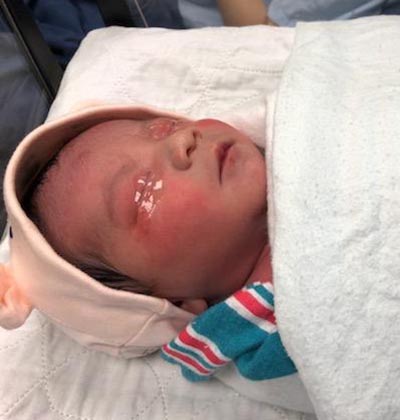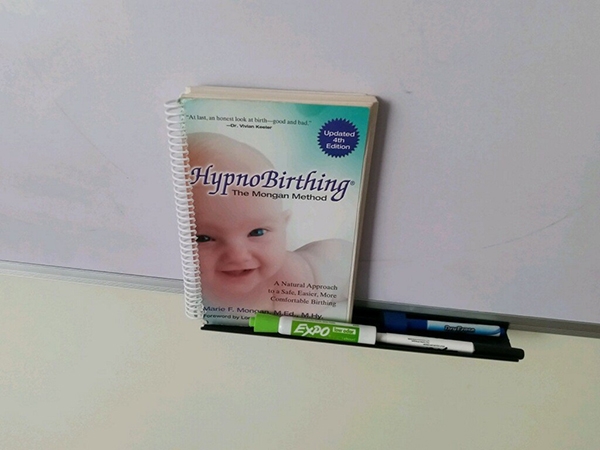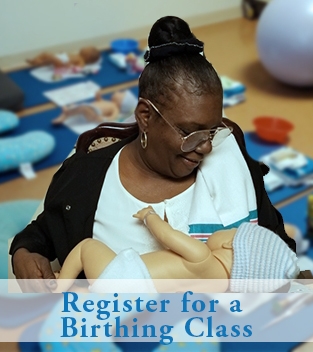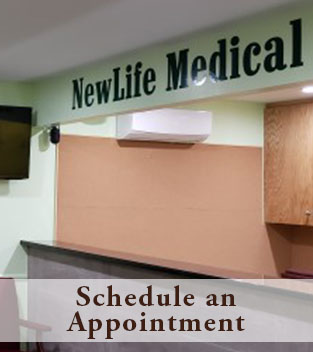We were recently featured in the New York Times – Read Article
Texas has 70 free-standing birthing centers; New York has three. In the city, where Mount Sinai West’s birthing center will soon close, money is one big factor.
By Julie Satow
Nov. 30, 2018
Lisa Binderow had envisioned her labor a thousand times. She bought a birthing ball, hired a doula and even practiced hypnotherapy.
Her plan was to deliver at the Mount Sinai West Birthing Center, an area of the hospital marked by pastel curtains, family-size beds and large birthing tubs. Separated from the regular labor and delivery floor, it is for women who want a natural childbirth with minimal medical intervention.
Yet after arriving in triage, Ms. Binderow, 35, was made to wait. And wait.
“They kept coming back to tell me that the birthing center was closed, and they had no other rooms available,” she said. As the minutes turned into hours, Ms. Binderow was forced to labor on an aluminum bed — there was not a mattress or even sheets for comfort. The only thing that separated her from other women in labor was a thin curtain. There was no chair for her husband, let alone space for her birthing ball, which was left to roll around in the hallway.
After five hours, she was ready to push. “The baby was coming, and I was still in triage,” she said. Eventually, a proper hospital bed arrived. Orderlies then rolled Ms. Binderow down the hall and into a room that was filled with all sorts of equipment.
“It was a storage room,” she said.
As Ms. Binderow was gripped by waves of intensifying contractions, staffers cleared out the space to make room for her bed. Minutes later, Siena Binderow was born there.
It isn’t easy to have a natural, nonmedicated birth in New York. After years of hospitals trying to accommodate the option, most seem to be slowly backing away from the idea. The Mount Sinai West Birthing Center, which features just three birthing rooms, is often closed because of staffing issues or mothers who get “risked out” of the program for complicating factors like high blood pressure or stalled labor. And on Dec. 31, it will be shutting its doors for good.
Last year, Ms. Binderow was one of more than 1,000 women who registered at the birthing center to have a baby there. Yet of those, only 200 mothers were actually admitted — less than 20 percent — according to Save the Birthing Center, a group of mothers, midwives and doulas petitioning to keep Mount Sinai West’s center open. This year, even as news broke that the center would close, more than 990 women had signed up for it.
The demand for natural childbirth does not seem to be going away. In the United States, there are more than 350 free-standing (meaning that they are not located inside hospitals) birthing centers, an 82 percent increase since 2010, according to the American Association of Birth Centers. Texas has more than 70 such centers, and California has about 40. In contrast, New York State has just three: the Birthing Center of Buffalo, the Brooklyn Birthing Center and the Birthing Center of New York.
One reason that New York lags behind other states is that midwives here cannot operate birthing centers on their own, and are required to have a physician in charge. In November 2016, state legislation was passed to change this, but two years on, the Department of Health is still drafting the regulations necessary to implement the new law. Until then, the status quo remains.
“Birthing centers in New York have to be supervised by an M.D., and that is a huge barrier, since the majority of birthing centers in the country are staffed just by midwives,” said Kate Bauer, the executive director of the American Association of Birth Centers. “The fact that it is taking so long to write the regulations is frustrating for all involved.”
A spokesman for Gov. Andrew M. Cuomo wrote in an emailed statement that the governor’s office expects “to advance comprehensive regulations for midwifery birth centers across New York in the coming months.”
Legislation aside, the real reason, like so much else in the city, seems to point to money. Birthing centers have all the liability of traditional maternity wards, but bring in a fraction of the billable costs.
“Ours is a system that rewards doing more and penalizes letting nature take its course,” said Nan Strauss, the director of policy and advocacy at the nonprofit Every Mother Counts.
Beginning next year, after Mount Sinai closes its center, just three natural birth facilities will serve a city of more than eight million people. This includes two rooms at the NewYork-Presbyterian Lower Manhattan Hospital — the city’s lone remaining in-hospital facility come 2019 — as well as three rooms at the Brooklyn Birthing Center, and four rooms at the Birthing Center of New York.
Of course, there is always the option to give birth at home. The number of home births has increased in the last decade, and there are now about 35 home-birth midwives with practices in New York City, up from just a few in the early 1990s. Still, the numbers remain relatively low, in part because of the perceived risks associated with home births, and because they can be expensive, since almost no home-birth midwives accept in-network insurance.
With their options limited, many women are drawn to a whisper network of mothers, doulas, midwives and supportive obstetricians to discuss alternatives for nonmedicated births. Tactics include switching from obstetricians to midwives late in pregnancy so most of the expenses will be covered by insurance; patronizing hospitals in New Jersey, where space (and alternative staffing) does not come at such a premium; and aligning with one of the city’s public hospitals that has formed an unusual partnership with a midwifery practice.
Midwives who work at birthing centers and hospitals approach pregnancy and birth as healthy life events, using medical interventions only when necessary. But a “healthy life event” doesn’t make a hospital money; medical procedures do. This partly explains why the national cesarean section rate is now at almost 32 percent, up from less than 21 percent back in 1996. According to one study, low-risk women who aspired to deliver naturally at a birth center — even if they resorted to an epidural or other medical assistance — had a C-section rate of just six percent.
The natural birth movement, a reaction to “twilight sleep” injections, routine episiotomies and other interventionist hospital practices, began in New York in the 1960s and took off with the opening in 1975 of the city’s first birth center, the Maternity Center Association Childbearing Center on East 92nd Street, said Dr. Laura Zeidenstein, the director of the graduate midwifery program at the Columbia School of Nursing.
By the early 2000s, things had changed. In 2003, the Elizabeth Seton Childbearing Center in Greenwich Village, the successor to the Maternity Center, closed. That same year, NewYork-Presbyterian’s Allen Hospital eliminated most of its midwifery services, and then later, the Morris Heights Childbearing Center also closed. In 2009, Bellevue closed its birthing center.
“I would say we are in a really big crisis right now, but I’m hopeful that it is a crisis of opportunity,” said Dr. Zeidenstein, who worked at the Maternity Center and helped found Elizabeth Seton. “Things that have long been true — racial disparities, high maternal and infant mortality rates, the disrespectful treatment of women in obstetrics — are finally coming to the forefront of public awareness and hopefully action will be next.”
When it closes later this month, the Mount Sinai West Birthing Center will be replaced with 13 neonatal intensive care unit (NICU) beds and 15 private postpartum rooms. “We are making critically necessary expansions of our NICU and postpartum rooms to address the growing volume of sick and premature babies,” the hospital said in a statement. “The decision to convert the birth center into NICU and postpartum unit was in no way driven by financial considerations, any suggestion otherwise is false.”
Yet many experts insist the closure is financially motivated. Because of the way that insurance companies reimburse hospitals, the more procedures, the more revenue generated. For instance, in 2010, private insurers reimbursed hospitals, on average, almost $10,000 more for a C-section birth than for a vaginal birth, according to a study by Truven Health Analytics.
By closing the birthing center, Mount Sinai will be more than doubling its private postpartum rooms, for which it currently charges $900 a night, a fee that is not covered by insurance. Its new neonatal intensive care unit, while undoubtedly critical for many babies, will most likely be a major profit center for the hospital.
“It is such a clear indication that this is the continued growth of the medical-industrial complex,” said Dana-Ain Davis, the director of the Center for the Study of Women and Society at the City University of New York, of the birthing center’s closure. By increasing the neonatal intensive care beds, Ms. Davis added, the focus is “intervention, rather than prevention.”
Recent news that NewYork-Presbyterian will be investing in a new, state-of-the-art maternity facility — without a designated birthing center — has only intensified competition among hospitals. When it opens in 2020, the Alexandra Cohen Hospital for Women and Newborns will have 75 private postpartum rooms, up from just 22 private rooms currently, as well as 60 neonatal intensive care beds, and 16 labor and delivery rooms. The hospital also claims it will have New York City’s only operating room situated within a neonatal intensive care unit.
“I really do feel strongly that women — all women — have different ideas of what they want for their birth experience, and it is our job to give that to them, whatever that is,” said Dr. Laura Riley, who was recently hired to run the new hospital.
“With this new hospital, the competition is going to be all about how much hospitals can make themselves like hotels,” said Bonu deCaires, a longtime doula and educator. “Are there private rooms? What is the food like? How plush is it? But what really matters is the care that you receive, not the thread count.”
While competition is tough among hospitals, it has become dire for midwives. In recent years, a combination of high malpractice insurance costs and low reimbursement rates has forced several midwifery practices to close.
“Midwifery is very hands-on and time-intensive,” said Dr. Zeidenstein of Columbia, who was also a midwife at Midwifery of Manhattan, a private practice that, despite having a patient waiting list, closed last year. “Midwives utilize technology judiciously. The cost is human time and that just can’t be billed for.”
Doulas, or birthing coaches, are also struggling to make ends meet. But their services aren’t covered by insurance, limiting the number of women who can hire them. The New York State Department of Health, in looking to remedy this, is considering measures for Medicaid to cover doulas, although the proposal is not yet finalized.
“It is about birth justice and body autonomy,” said Chanel L. Porchia-Albert, the founder of Ancient Song Doula Services, which provides free and low-cost care. “What happens sometimes for women of color is that we are criminalized for the choices we make,” she said. “If a woman comes in and says I don’t want this medical intervention, they will call child protective services because they consider it medical neglect, or if you don’t want to have a C-section and want a natural birth, they will ignore your wishes or even refuse basic medical care.”
It was these concerns that drove Marsha Willock, a nurse from Canarsie, Brooklyn, who is black, to hire a doula. “I really want to survive this, and the maternity mortality rate really shook me up,” said Ms. Willock, who was referring to the fact that in New York City, non-Hispanic black woman are 12 times more likely to die from pregnancy-related causes than non-Hispanic white women. “People shouldn’t be dying,” she said. “Especially for something that is supposed to be natural.”
At Lower Manhattan Hospital, the situation is similar to that of Mount Sinai West. Rooms are often inaccessible or closed, and disgruntled midwives have quit. Ms. deCaires, for instance, recently attended a birth with a mother who was told when she arrived that the birthing center was full; the mother would have to give birth in a regular labor and delivery room. Yet when she settled into her room, it turned out to be a birthing center room, with with a tub and other accoutrements. The mother was prohibited from making use of these things; she ended up with an epidural.
“The Birth Center at NewYork-Presbyterian Lower Manhattan Hospital has two fully operational rooms,” a spokeswoman said. “One of the Birth Center rooms can also accommodate all labor and delivery patients.”
Jennifer Adair decided to leave the city to have her baby. “I loved my obstetrician, but as I got into my third trimester, there was a lot more talk about medical interventions,” said Ms. Adair, an assistant professor at Fairfield University who lives in Inwood. At 31 weeks, she switched to a midwife, but since she was so far along, her options were limited. A doula suggested that she consider giving birth in New Jersey.
“I found the level of care there was exactly what I wanted,” said Ms. Adair, who delivered at Pascack Valley Medical Center in Westwood, a short drive over the George Washington Bridge. The hospital doesn’t have a separate birthing center, but it does offer midwifery care, and Ms. Adair gave birth without medical interventions. “My insurance was accepted, and unlike the hospitals I saw in New York, you were guaranteed a private postpartum room at no extra charge.”
For those who would like to stay in the city, there is, perhaps, a new option. Two years ago, Jamee Gidwitz planned to give birth at Mount Sinai East on Fifth Avenue. But after touring the hospital, she said, she grew fearful that the staff there wouldn’t support her choices. When she told her doctors at Village Obstetrics, who are affiliated with Mount Sinai East, they suggested that she be the first of their patients to try a new model of care they were offering.
The doctors, George Mussalli and Jaqueline Worth, were opening Village Maternity, a private midwifery practice. It was to be a separate business from Village Obstetrics. Dr. Mussalli and Dr. Worth would continue delivering babies at Mount Sinai East, but Village Maternity midwives would deliver babies at Metropolitan Hospital, a public hospital in East Harlem.
Located on First Avenue and 97th Street, Metropolitan is a part of New York City’s Health and Hospitals Corporation. The majority of its patients are part of its pre- and postnatal clinic, which serves mostly lower- and middle-income women with either no insurance or public insurance.
There are several reasons Dr. Mussalli and Dr. Worth chose Metropolitan. The hospital has midwives on staff, and Dr. Mussalli did his residency there. Moreover, unlike most private hospitals in New York, Metropolitan offers private postpartum rooms at no extra cost.
“As private hospitals have gotten busier, the city’s hospital system hasn’t enjoyed the same increase in their volume,” Dr. Mussalli said. “It is a leftover reputation from the 1970s, when people wanted to avoid city hospitals. But I know firsthand that the city system has changed.”
Ms. Gidwitz, a publicist who lives in the financial district, toured Metropolitan. She was impressed. “There were huge private labor and delivery rooms,” she said, “postpartum rooms with en-suite bathrooms, your toddlers could come in — my partner slept in the same bed with me. I have no idea why it wasn’t filled to capacity.”
Back at Mount Sinai West, the 90-member Save the Birthing Center group is holding out hope that the hospital will reverse course. It has been meeting regularly, and its petition has so far garnered more than 14,000 signatures.
Lauren Alzamora, a member of the group, has seen the benefits of her advocacy firsthand. The former dancer wrote a letter asking for confirmation from the hospital that she would not be turned away from the center when she went into labor. The letter was co-signed by more than a dozen women who are also set to deliver at the center before it closes.
Mount Sinai refused to give Ms. Alzamora any such assurances. But when she arrived, the nurses, who knew of her activism, ushered her through triage and directly to the birthing center. Her daughter Kascher was born there without medical intervention. “It was a beautiful birth,” Ms. Alzamora said. “A natural birth should be every woman’s right. Why does it have to be so hard?”










